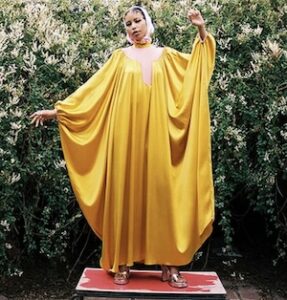Shelter; The Art of Portrait
By Ravi Basnayake
Portraiture is one of the most popular genres in painting. It gives rise to the most accurate representation, in principle, of a person and highlights his or her characteristics and expressions. In fine art and the hierarchy of genres, portrait art always comes on top among history painting, landscape and still life. Throughout centuries, talented portraitists kept expressing their art. Whether in classicism, romanticism or naturalism, with individual, group, or self-portraits from simple poses such as head-and-shoulders to half-length or full-body. Historically, portrait paintings mainly celebrated the rich and the powerful. Over time, however, it has become more common for middle-class clients to have portraits of their families and colleagues. Despite all the possibilities, the particular beauty and charm of portraiture come from the difficulty to depict exactly the subject’s character and uniqueness – a feat perfectly achieved by painters such as Jan Van Eyck, Diego Velazquez, and Rembrandt, renowned by many as the greatest portraitists of all time.
“Portrait of Jan Six” 1654, Rembrandt – “Portrait of Pope Innocent X” 1650, Diego Velazquez
Jan van Eyck (1390-1441)
Active a couple of centuries before the two latter, Jan Van Eyck was a pioneer of portrait painting who perfected the use of oils and brought the realism of details to a new level. His most famous work is probably the double-portrait “The Arnolfini Wedding”.
Other portrait masterpieces include “Man in a Red Turban”.
Diego Velazquez (1599-1660)
Velazquez produced at two of the most popular portraits paintings of all time: “Portrait of Pope Innocent X” and “Las Meninas”.
Rembrandt van Rijn (1606-1669)
Rembrandt is considered by many the greatest ever portrait painter in the history of art. His field being portraiture, he was the most sensitive and perceptive painter of the human face as he often depicted compassion and humanity.
Masterpieces could include his group portrait “The Nightwatch” or his individual masterpiece “Portrait of Jan Six”.
When it comes to Modern Art, there are plenty of iconic portrait painters with the likely of Frida Kahlo, Pablo Picasso or Francis Bacon.
“Garçon à la pipe” 1905, Pablo Picasso – “The Two Fridas” 1939, Frida Kahlo – “Three Studies of Lucian Freud” 1969, Francis Bacon
And Berlin-born British painter, Lucian Freud is certainly not a stranger in that conversation as his characteristic sombre and expressionist paintings make him one of the most unique and recognizable artists in the history. As the Grandson of the father of psychoanalysis Sigmund Freud himself, Lucian Freud’s work is noted for its psychological penetration and the disconcerting relationship between the artist and model.
His incredibly long career throughout which he was remarkably consistent, resulted in hundreds of paintings, drawings, sketches and etchings.
A vast number of them are gathered in the eponymous book releasing this September the most complete publication to date on the artist.
Lucian Freud, created in collaboration with the Lucian Freud Archive and David Dawson, director of the archive, celebrates the painter’s work from the 1930s to his death in 2011 over a six-decade career. Featuring essays by art critic Martin Gayford on the development of Freud’s career over each decade, and more than 480 illustrations including illustrated private letters, it’s the most comprehensive publication on one of the most celebrated painters of the twentieth and early twenty-first centuries.
Edited by Mark Holborn
Published by Phaidon, 7 September 2018








